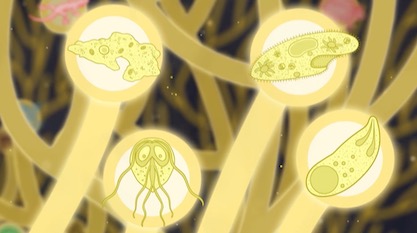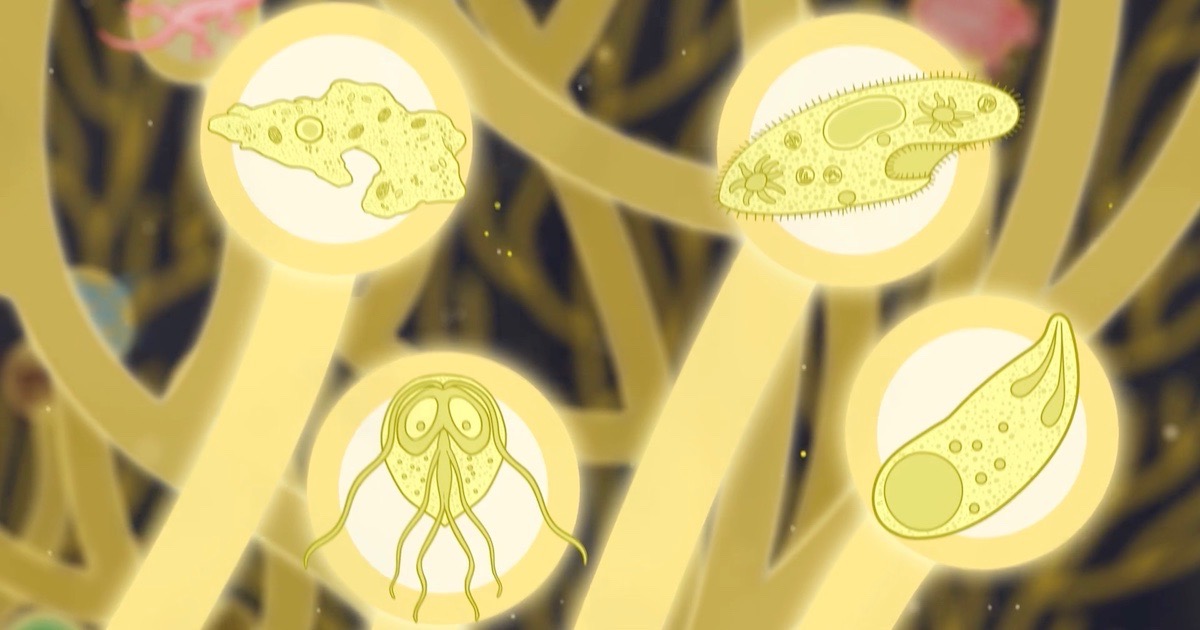 Education
Education
 Evolution
Evolution
Evolution Miseducation at the University of Utah


If you want your sons and daughters to be well educated about evolution, then hope their biology teachers don’t rely on materials from the Genetic Science Learning Center at the University of Utah. The GSLC created evolution learning materials for classrooms nationwide with National Science Foundation funding.
The Center produced a four-minute video titled “The Unity and Diversity of Life” to educate its students about evolution. The video begins by pointing out that “life has existed on Earth for a very, very long time,” and even though we now share the planet with millions of diverse species the “DNA evidence strongly supports the idea that all living things share a common ancestor.”
Except that it doesn’t.
“Unresolved” Relationships
If all living things shared a common ancestor, their history would form what Charles Darwin called a “great Tree of Life,” with the common ancestor at the base of the trunk and today’s species at the tips of the branches. And the DNA evidence should produce this tree-like pattern, which in modern terminology is called a “phylogeny.” Yet in 2005 three evolutionary biologists compared 50 DNA sequences from 17 different animal groups, and they concluded that “different phylogenetic analyses can reach contradictory inferences with [seemingly] absolute support,” leaving the evolutionary relationships among the major groups of animals “unresolved.”
As more DNA evidence has accumulated, the problem has gotten worse. In 2012, four evolutionary biologists reported that “incongruence between phylogenies derived from morphological versus molecular analyses, and between trees based on different subsets of molecular sequences has become pervasive.” And inconsistencies among phylogenetic trees aren’t even the most serious problem. It turns out that many organisms contain DNA sequences that are not found in any other group. These have been named “orphan genes,” and they have been found in yeast, fruit flies, mice, and humans. A 2015 article in Nature reported hundreds of orphan genes restricted to squids and octopuses.
Trimming and Cramming the Evidence
How can a phylogenetic tree be based on DNA evidence when some sequences have no match? One way is simply to ignore the orphan genes. In 2016 three evolutionary biologists were able to construct a phylogenetic tree of insects only by ignoring 40 percent of the DNA sequences in fruit flies and 80 percent of the sequences in water fleas. Rather than strongly supporting the idea that all living things share a common ancestor, the DNA evidence has to be trimmed and crammed into the idea.
The narrator goes on to acknowledge that although we can observe minor changes within existing species, we “haven’t seen whole new categories of species take shape before our eyes.” But that’s just because we haven’t been looking long enough. “Believe it or not,” the narrator continues,
the mechanisms that give rise to wildly diverse species are the same as the ones that drive small changes. The pattern goes like this: Reproductive barriers cause lineages to branch. Mutation and allele shuffling generate variation within each branch, and natural selection causes those branches to diverge as each population adapts to different surroundings. Repeated again and again, this pattern of branching and divergence can expand one lineage into millions.
That’s a thumbnail sketch of the neo-Darwinian theory of allopatric speciation. As the narrator acknowledges, it has been observed to give rise to new varieties within existing species (microevolution). But it has never been observed to produce new species, organs, or body plans (macroevolution). Instead of providing evidence for it, the video relies on bare assertion, followed by a series of just-so stories — a pattern all too common in modern science education.
Some Important Missing Details
“The first primates appeared and then diversified,” the narrator continues. “Cetaceans returned to the sea and gave rise to all living whales and dolphins.” Just like that. Of course, “cetaceans” means whales and dolphins, so a few important details are missing from the story.
Nevertheless, according to the video: “From what we can observe, we’re able to conclude that the patterns we see acting today are the same as the patterns that acted in the past.” But even some evolutionary biologists have acknowledged that processes in the past must have been different from the present, precisely because we can’t observe them happening now.
We often hear that “nothing in biology makes sense except in the light of evolution.” But if this embarrassingly dumbed-down video is any indication, your son or daughter can make sense of genetics without being given any real insights into evolution.
Image: A scene from “The Unity and Diversity of Life” via University of Utah (screen shot).
